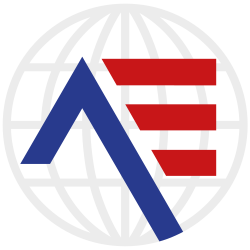We often get approached by customers who are interested in producing clothing for children and babies as a business. As we work with lots of amazing makers of childrenswear and have a wealth of experience with this market, we’re always happy to help! We’ve written this quick guide to help you get started and give an overview of some factors you may wish to consider when looking to branch into this area.

Materials
Fabrics:
The fabric used to make clothing for babies and children ideally needs to be soft and gentle on the skin, and preferably stretchy enough to allow them to move and play comfortably without restriction. Medium-weight woven fabrics like cotton are a very popular choice. Cotton is favoured for its comfort and breathability, and knit fabrics have the added benefit of being soft, stretchy, breathable, and comfortable. Cotton blends are also frequently used because they combine the qualities of cotton and synthetic materials and are usually cheaper and less prone to creasing. Synthetic fabrics like nylon, rayon, and polyester are less popular choices as they can be scratchy and don’t breathe well, which makes them less comfortable against the skin. Most makers we work with use a 100% cotton with interlock knit or a blend of 95% organic cotton, 5% elastane organic cotton rib knit.
Organic VS standard:
Many makers favour organic fabrics for childrenswear because they are free from chemicals which can potentially aggravate common conditions like eczema. Organic cotton is also more environmentally friendly, as less water is used in its production and no toxic chemicals and pesticides are used when it is farmed. 100% organic cotton is one of the best choices available for an eco-friendly end product. However, organic fabrics are generally pricier than their alternatives, and some prefer not to use them. If you are not using organic fabrics then we would recommend pre-washing to remove any potentially harmful chemicals before use.

Design considerations
Comfort:
When producing clothing for children and babies, it is important to make them as comfortable as possible to protect their sensitive skin. Standard additions such as labels can be scratchy and irritating, so it may be worth considering not adding these. Fastenings such as zips and Velcro can also cause inflammation. If you are adding decorative elements such as bows on clothes for everyday wear, try to ensure that they won’t get in the way when children are playing. Practical, unrestrictive items of clothing like rompers and leggings are usually very popular with parents and children alike, so we recommend keeping the designs as simple as possible!
Maintenance and practical use:
It’s important to consider who will be wearing these clothes, but it’s also a good idea to consider parents when designing them! Childrenswear has to put up with a lot, it needs to be durable and made of fabric which won’t stain easily. Parents need to be reassured that the items can stand up to regular washing and can be used for as long as possible. Many of the makers we work with choose to use patterned fabrics. These are popular with children and adults alike and have the advantage of being gender neutral and effectively hiding everyday stains! Most parents also favour stretchy waistbands which allow for growing children and mean that the clothes can be easily put on and taken off. Easy-to-use snaps are also popular for quick nappy changes.

Machine recommendations
We have many industrial sewing machines available which would be perfect for making clothing for children and babies. This quick guide will give you some ideas but you are welcome to contact our team for more information and recommendations tailored to you!
Juki MO6714DA – Used for hemming, joining, and attaching cuffs. This is a durable high-speed 2-needle overlock/safety-stitch machine, with a semi-dry head to reduce any potential oil damage to fabrics. Overlocking produces extra strong, stretchy seams which sit flat for optimum comfort!
Juki MF 7923 U11/UT51/PL – Used for attaching elastic to the waistband and hemming cuffs. This is a semi-dry head cylinder-bed top and bottom coverstitch with additional puller. It produces exceptionally high-quality seams, and the additional puller which we have fitted increases the efficiency and accuracy of your sewing! This model is known around the office as “The LoveBee Machine” after being made famous by one of our lovely customers on her Instagram page!
Juki DDL 7000A-7 – Used as an all-rounder for general sewing. This is a direct-drive, 1 needle lockstitch machine with automatic thread trimmer. It can be used to sew many materials ranging from light-weight cotton to medium-weight denim thanks to the thread take-up lever.
Juki DDL 9000C -Used as an all-rounder for general sewing. This direct-drive, high-speed lockstitch machine with automatic thread-trimmer produces consistently high-quality seams. This model has a digital touchscreen which allows you to add pre-sets which can be pre-programmed to a particular material or a specific part of your garment sewing process. These can be quickly cycled through and are easily customised to the user!

If you are looking for a machine to take your hobby sewing to a professional standard, planning to start up a new business, or even upgrading existing machines, we can help! We don’t just sell machines in boxes; our team build and them up set up every machine in a way which is tailored to you and your processes. We are also on-hand to provide advice and technical support to keep things running smoothly! You can contact our team directly through the contact form on our website or by emailing info@ae-sewingmachines.co.uk










